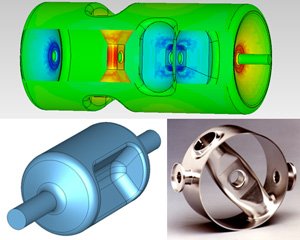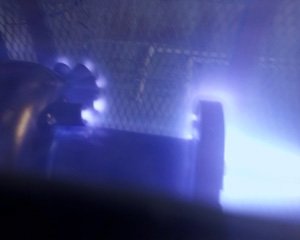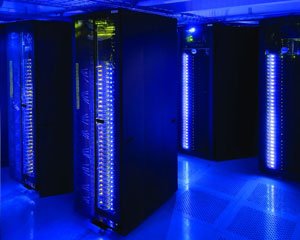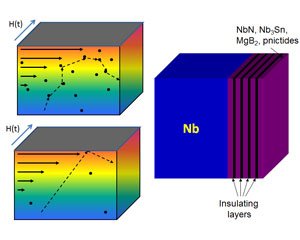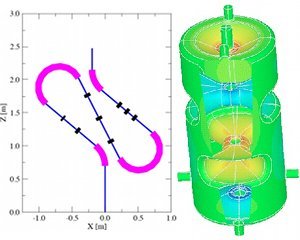We are designing, developing, building, and testing novel SRF structures for a variety of accelerator applications: linear accelerators, colliders, and light sources. These structures cover a wide range of frequency, particle velocity, and species (electron, proton, ions), and can be used for either the acceleration or deflections of particle beams. This area of research is fully multidisciplinary and draws on applied mathematics, computer science, classical mechanics and electromagnetism, mechanical and electrical engineering.
Our pursuit combines expertise in the atomic collision and gas discharge physics to advance plasma science approach that aims to resolve a number of issues created by the progress of contemporary accelerators and accelerator-based light sources. We are developing plasma processing and beam production technologies, all for the purpose of inventing and advancing new compact light sources. Currently, we are developing generic experiments and models that reflect the geometry and processing objectives of accelerator cavities. In a separate set of experiments, we are also studying charged particle transport from the solid/vacuum interface of contaminated walls at actual operational conditions. We are working to resolve the effect of secondary electron emission on the multipactor and field emission phenomena.
Advancements in the field of accelerator physics are unimaginable without high-fidelity computer simulations. A multidisciplinary team of researchers from the various departments -- physics, computer science, applied mathematics, engineering and others -- designs, develops and deploys high-performance computer simulations aimed at simulating existing and future particle accelerators. At the time when different computational platforms offer varying degrees of massive parallelism, we aim to achieve optimal performance by matching algorithms with underlying computer architecture. Examples of such high-performance computational tools currently in use or under development at the CAS are:
- Multidimensional non-linear optimization code based on genetic algorithms. We apply these codes to various problems related to accelerator performance and design, such as optimization of RF injectors and cavities, particle collider's luminosity, dynamic aperture, momentum acceptance, chromatic correction and others.
- Computer code for simulating long-term dynamics in particle colliders -- including beam-beam effects, dynamic aperture, momentum acceptance, operational stability and other effects.
- Computer code for simulation of coherent synchrotron radiation in light sources and storage rings.
Our computer efforts are supported by the CPU/GPU clusters at the Jefferson Lab and the ODU.
One of the outstanding issues of the accelerator science and technology is related to the fundamental physics and materials science which limit the performance of superconducting resonator (SRF) cavities. The state of the art Nb cavities can generate very high electromagnetic fields close to the theoretical breakdown limit of the Meissner state so that the surface resistance, the quality factor and the RF breakdown field are determined by complex interplay of nonequilibrium superconductivity, impurities and materials defects. The physics of superconductivity under such extreme conditions of strong electromagnetic fields, and the limits to which the SRF performance can be pushed by the materials modifications are not well understood. The SRF group has been investigating both theoretically and experimentally the rf properties of superconductors for accelerator applications, particularly the nonlinear surface resistance and breakdown of superconductors under strong rf fields. We are measuring the rf properties of conventional and novel superconductors over a wide range of frequency, temperature, and rf field to understand the interplay of superconducting properties and materials defects and to optimize the SRF cavities. We are also exploring new ways of improving the performance of superconducting cavities by materials modifications, impurity management and nanoscale multilayer nanostructuring using new superconducting materials to push the SRF performance beyond the intrinsic limits of Nb for the next generation particle accelerators.
When relativistic electrons interact with a high-field laser beam, intense and highly collimated electromagnetic radiation is generated through Compton scattering. The relativistic upshifting of the scattered photon energy can be used to produce useful photon beams from a compact source. We are using our superconducting RF and beam transport expertise to develop a world-class integrated design for a compact inverse Compton scattering light source. Our design efforts include all aspects of the Compton electron accelerator, including a superconducting photoinjector, superconducting spoke cavity acceleration linac, and six dimensional bunch compression.
We are designing, developing, building, and testing novel SRF structures for a variety of accelerator applications: linear accelerators, colliders, and light sources. These structures cover a wide range of frequency, particle velocity, and species (electron, proton, ions), and can be used for either the acceleration or deflections of particle beams. This area of research is fully multidisciplinary and draws on applied mathematics, computer science, classical mechanics and electromagnetism, mechanical and electrical engineering.
Our pursuit combines expertise in the atomic collision and gas discharge physics to advance plasma science approach that aims to resolve a number of issues created by the progress of contemporary accelerators and accelerator-based light sources. We are developing plasma processing and beam production technologies, all for the purpose of inventing and advancing new compact light sources. Currently, we are developing generic experiments and models that reflect the geometry and processing objectives of accelerator cavities. In a separate set of experiments, we are also studying charged particle transport from the solid/vacuum interface of contaminated walls at actual operational conditions. We are working to resolve the effect of secondary electron emission on the multipactor and field emission phenomena.
Advancements in the field of accelerator physics are unimaginable without high-fidelity computer simulations. A multidisciplinary team of researchers from the various departments -- physics, computer science, applied mathematics, engineering and others -- designs, develops and deploys high-performance computer simulations aimed at simulating existing and future particle accelerators. At the time when different computational platforms offer varying degrees of massive parallelism, we aim to achieve optimal performance by matching algorithms with underlying computer architecture. Examples of such high-performance computational tools currently in use or under development at the CAS are:
- Multidimensional non-linear optimization code based on genetic algorithms. We apply these codes to various problems related to accelerator performance and design, such as optimization of RF injectors and cavities, particle collider's luminosity, dynamic aperture, momentum acceptance, chromatic correction and others.
- Computer code for simulating long-term dynamics in particle colliders -- including beam-beam effects, dynamic aperture, momentum acceptance, operational stability and other effects.
- Computer code for simulation of coherent synchrotron radiation in light sources and storage rings.
Our computer efforts are supported by the CPU/GPU clusters at the Jefferson Lab and the ODU.
One of the outstanding issues of the accelerator science and technology is related to the fundamental physics and materials science which limit the performance of superconducting resonator (SRF) cavities. The state of the art Nb cavities can generate very high electromagnetic fields close to the theoretical breakdown limit of the Meissner state so that the surface resistance, the quality factor and the RF breakdown field are determined by complex interplay of nonequilibrium superconductivity, impurities and materials defects. The physics of superconductivity under such extreme conditions of strong electromagnetic fields, and the limits to which the SRF performance can be pushed by the materials modifications are not well understood. The SRF group has been investigating both theoretically and experimentally the rf properties of superconductors for accelerator applications, particularly the nonlinear surface resistance and breakdown of superconductors under strong rf fields. We are measuring the rf properties of conventional and novel superconductors over a wide range of frequency, temperature, and rf field to understand the interplay of superconducting properties and materials defects and to optimize the SRF cavities. We are also exploring new ways of improving the performance of superconducting cavities by materials modifications, impurity management and nanoscale multilayer nanostructuring using new superconducting materials to push the SRF performance beyond the intrinsic limits of Nb for the next generation particle accelerators.
When relativistic electrons interact with a high-field laser beam, intense and highly collimated electromagnetic radiation is generated through Compton scattering. The relativistic upshifting of the scattered photon energy can be used to produce useful photon beams from a compact source. We are using our superconducting RF and beam transport expertise to develop a world-class integrated design for a compact inverse Compton scattering light source. Our design efforts include all aspects of the Compton electron accelerator, including a superconducting photoinjector, superconducting spoke cavity acceleration linac, and six dimensional bunch compression.



